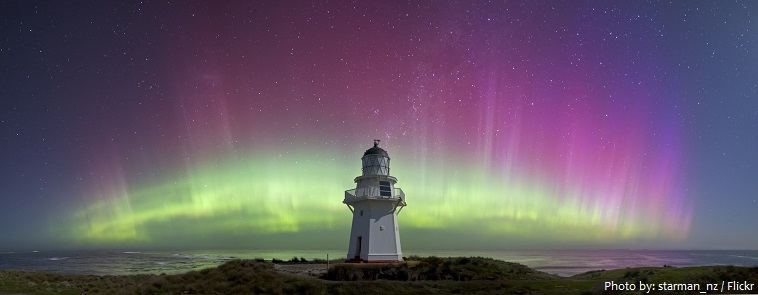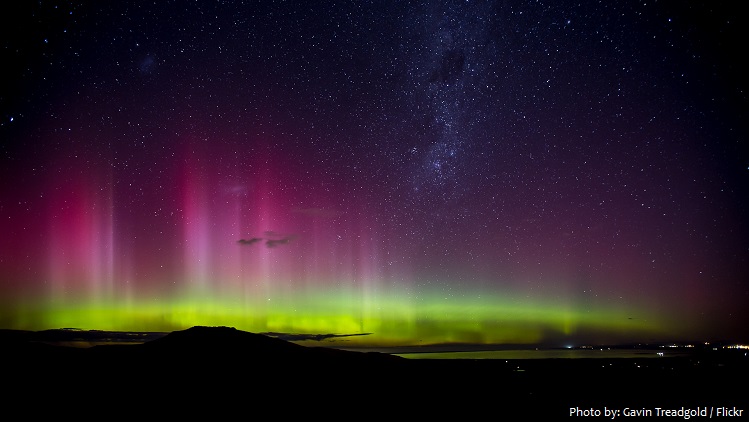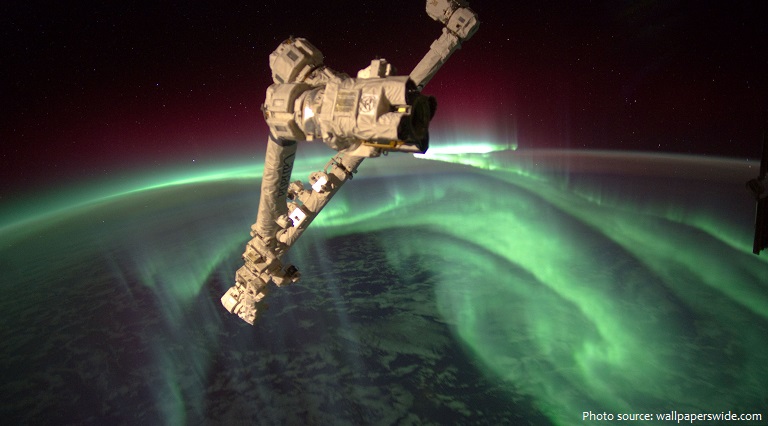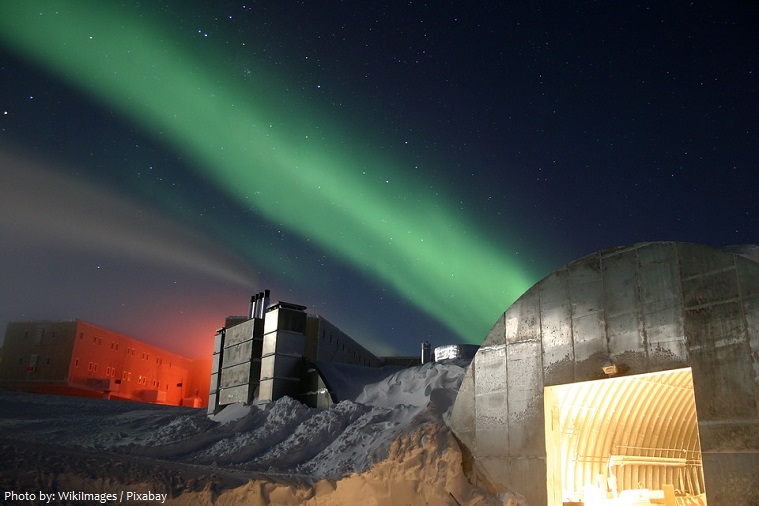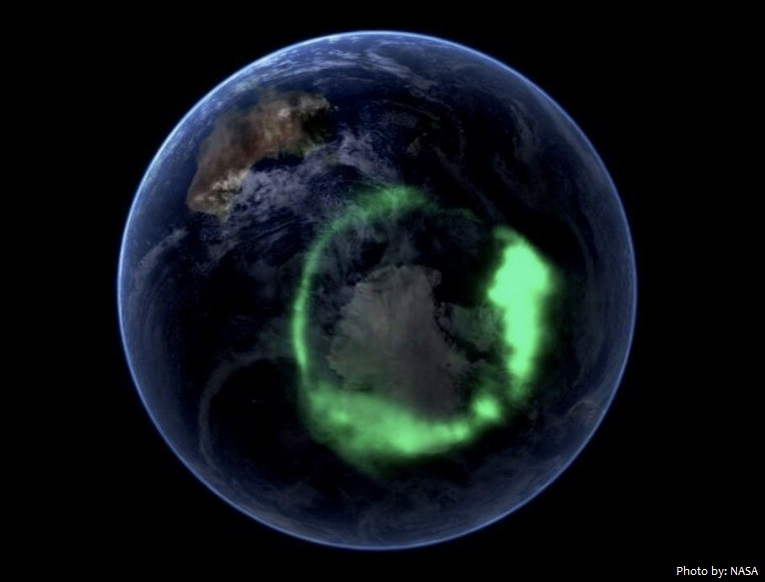The aurora australis or southern lights is a natural light display in the Earth‘s sky.
It is the southern cousin to the aurora borealis.
The aurora australis is visible from high southern latitudes in Antarctica, Chile, Argentina, New Zealand, and Australia.
The activity that creates auroras begins on the sun. The sun is a ball of superhot gases made up of electrically charged particles called ions. The ions, which continuously stream from the sun’s surface, are called the solar wind.
As solar wind approaches the Earth, it meets the Earth’s magnetic field. Without this magnetic field protecting the planet, the solar wind would blow away Earth’s fragile atmosphere, preventing all life.
The aurora occur in a region of the atmosphere 100 km (60 mi) above the earth, while rays can extend from this level to 500 km (about 300 mi).
It is most often seen in a striking green color, but it also occasionally shows off its many colors ranging from red to pink, blue to purple, white to yellow to orange.
The reason that the aurora is seen in so many colors is that our atmosphere is made up of many different compounds like oxygen and nitrogen. When the charged particles that come from the sun hit the atoms and molecules of the Earth’s atmosphere, they excite those atoms, giving off light. Different atoms give off different colors of the spectrum when they are excited.
Auroras can appear as long, narrow arcs of light, often extending east to west from horizon to horizon. At other times they stretch across the night sky in bands that kink, fold, and swirl, or even ruffe like curtains. They can spread out in multi-colored rays, like vertical shafts of light that stretch far up into space. And sometimes they engulf the sky in a thin cloud or veil – “Like snowfakes, no two are ever quite the same.”
The South Magnetic Pole is near Vostok Station, Antarctica, and the southern “auroral oval”, the zone of most frequent auroral occurrence, roughly encircles the Antarctic Continent. It is only during very major disturbances that the southern lights move sufficiently equatorward to be seen over continents such as Australia.
The southern lights are not as popular as the northern lights becouse of its location. In the north around the Arctic Circle, you’ll be able to see the aurora borealis from Greenland, Iceland, northern Canada, Norway and Russia. But due to the location of land down south, there are fewer places that reach down low enough to Antarctica to offer good Southern Lights viewing spots – it’s mostly just water.
The existence of these “southern lights” was first suggested in Europe in 1733 by de Mairan, in the first textbook published that was devoted to the aurora.
They were confirmed by Captain James Cook, who observed the phenomenon during his voyage of discovery to Australia in Endeavor in 1770. During his subsequent expedition to the Antarctic in Resolution (1772-75), he and his crew had several sightings. He then coined the term Aurora Australis, and compared its colours and motions to those of the Aurora Borealis that they had viewed over Sweden.
The word “aurora” is derived from the name of the Roman goddess of the dawn, Aurora, who travelled from east to west announcing the coming of the sun.
The word “australis” is derived from the Latin and means southern. It is derived specifically from the hypothetical Terra Australis postulated in pre-modern geography.
In the traditions of Aboriginal Australians, the Aurora Australis is commonly associated with fire. For example, the Gunditjmara people of western Victoria called auroras puae buae (‘ashes’), while the Gunai people of eastern Victoria perceived auroras as bushfires in the spirit world.
